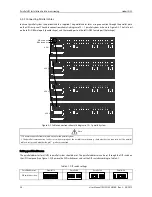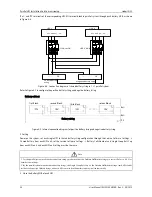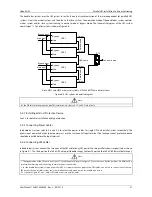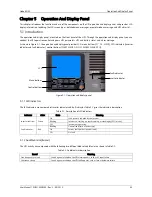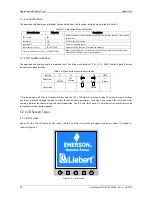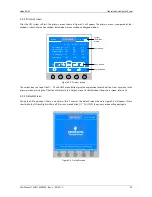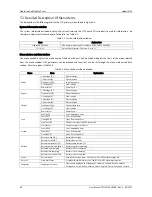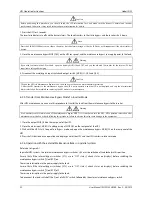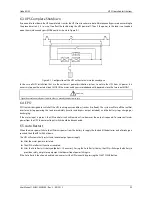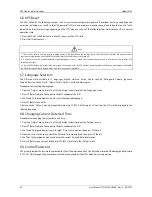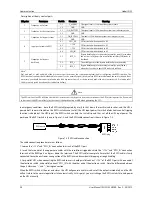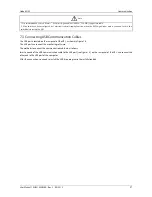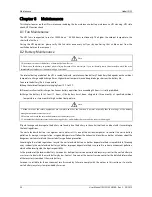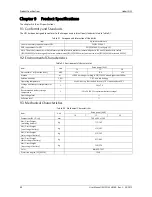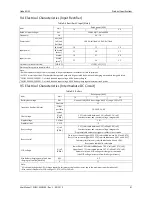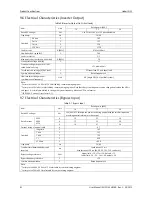
48
User Manual 10H52188UM60 - Rev. 2 - 09/2012
Operation And Display Panel
Liebert NXC
5.4
Prompt Window
A prompt window is displayed during the operation of the system to alert you to certain conditions and/or to require your
confirmation of a command. The prompts and meanings are given in Table 5-7.
Table 5-7 Prompts and meanings
Prompt Meaning
Transfer with interrupt, confirm or cancel
Inverter and bypass supplies are not synchronized, and the load transfer between the
bypass and inverter will cause a brief power supply interruption
This operation leads to output shutdown,
confirm or cancel
The bypass is abnormal, inverter shutdown will cause the load power-off
Turn on more UPS to carry current load
The number of paralleled inverters already turned on is insufficient to carry the current
load, thus more inverters are required
Battery will be depleted, confirm or cancel
The battery maintenance test discharges the battery completely. A prompt screen will
appear to require your confirmation. Cancelling the test will end the battery discharge
and return to the Normal mode
System self-test finished, everything is ok
No operation is required
System self-test finished, please check the
current warnings
Check the current alarm message
Enter control password
Control password is required for battery test or UPS test
Battery self-test condition is low, please check
battery state and load level
Battery test condition is not met. Please check whether the battery is in boost charge
state and the load level is more than 20%
Forcing charge condition is low, please check
battery state
The prompt appears when you select the forcing charge command while the forcing
charge condition is not met (such as no battery, charger failure)
Check the wiring according to the settings,
power-off takes effect, 3-phase (1-phase)
output
After the menu ‘3 Phase Output or 1 Phase Output’ is set, you can power off the system
completely, and then power on the system again after the wiring is changed according
to the settings
5.5
UPS Alarm Message List
Table 5-8 gives the UPS alarm message list based on the ‘Event’ and ‘Records’ menus.
Table 5-8 UPS alarm message list
Alarm message
Description
Inverter comm. fail
Internal communication failure between the monitoring board and the inverter
Rectifier comm. fail
Internal communication failure between the monitoring board and the rectifier
Parallel comm. fail
The communication failure between different UPS within a parallel system.
1. Check if there are some UPS not powered on in parallel system. If so, power on these UPS and check if the
alarm disappears.
2. Press the FAULT CLEAR button
Battery fault
Battery is depleted (reserved)
Battery replaced
Battery test failure, and the battery should be replaced
Battery low
pre-warning
Before the end of the discharge, battery undervoltage pre-warning may occur. After this pre-warning, the
battery should have the capacity for 3 minutes discharging with full load. The time is user-configured ranging
from 3 minutes to 60 minutes. Shut down the load in time
Battery stop discharge Inverter is off due to the battery end voltage. Check the mains failure and try to recover it
Mains volt. abnormal
Mains voltage exceeds the upper or lower limit and results in rectifier shutdown. Check the input phase voltage
of the rectifier
Mains undervoltage
Mains is undervoltage, reduce load to keep running. Check the input line voltage
Mains freq. abnormal
Mains frequency is out of the limit range and results in rectifier shutdown. Check the input frequency
Rectifier block
Rectifier failure. The rectifier shuts down and the battery discharges
Rectifier overtemp.
The temperature of heat sink is too high to keep the rectifier running. The UPS can recover automatically. Check
the environment and ventilation
Battery charger fault
Battery charger is over voltage
Control power 1 fail
UPS operates but the control power is not available
Mains phase reversed
AC input phase sequence is reversed
Rectifier overcurrent
Rectifier is over current
Soft start fail
Rectifier cannot start due to the DC bus low voltage



